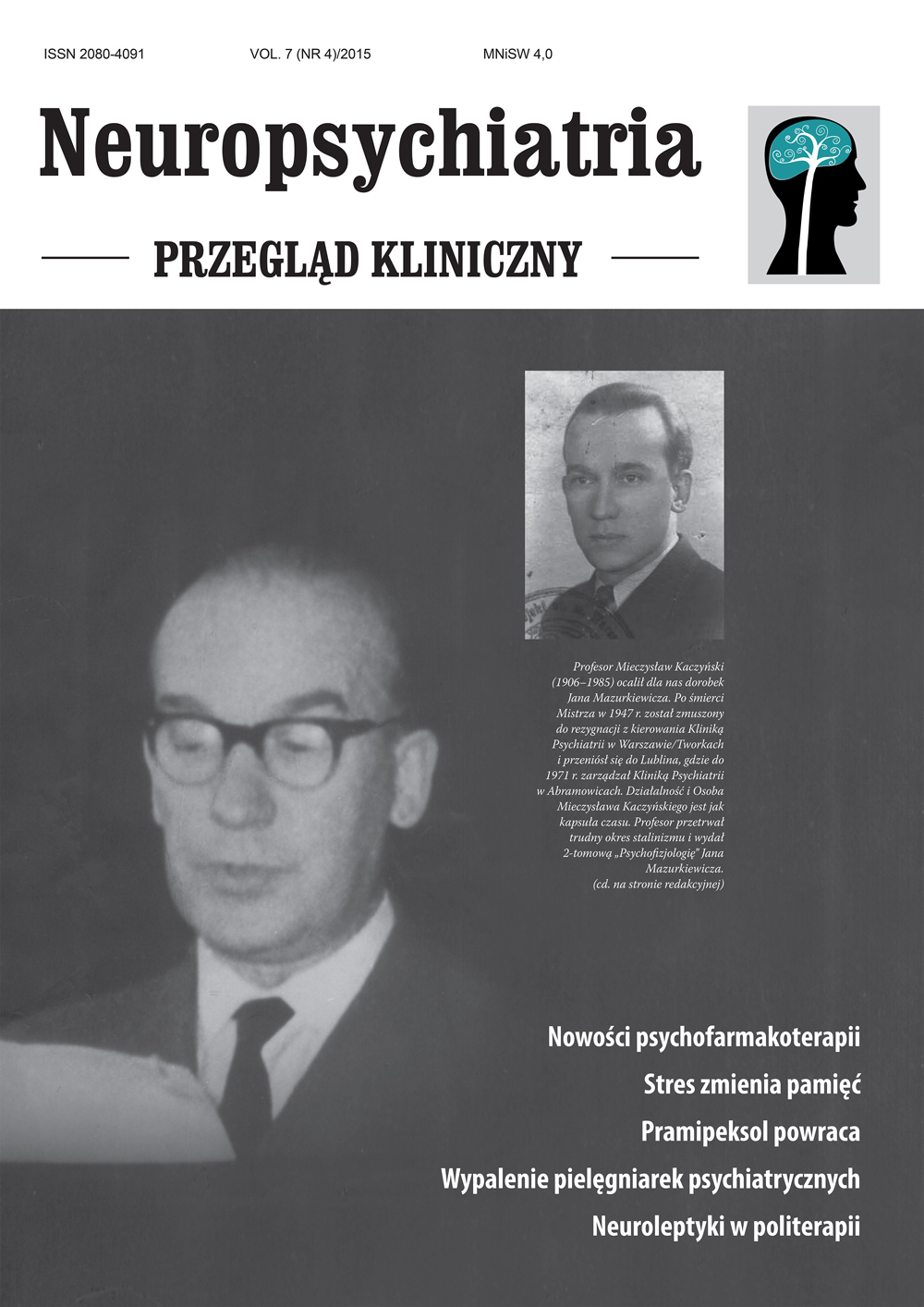Antipsychotics used in polytherapy Review article
Main Article Content
Abstract
Psychiatric polypharmacy refers to the prescription of two or more psychiatric medications concurrently to one patient. The reported overall prevalence rates of polypharmacy in psychiatry vary between 13–90%, especially with fundamental use of antipsychotics. Most polypharmacy prescriptions with antipsychotics have justifiable clinical rationales, such as refractoriness, problems of adherence, poor control of symptoms, problems of intolerance and other reasons. In other cases, polypharmacy with antipsychotics may reflect an attempt of augmentation therapy, or a treatment of different symptoms domains (e.g., cognitive or negative symptoms), prescribing habits or psychological motivation. Whether clinically justifiable or not, lots of psychiatric patients are being treated with polypharmacy with antipsychotics, mostly olanzapine, quetiapine, and aripiprazole, combining them with antidepressants, mood stabilizers or other antipsychotics.
Article Details

This work is licensed under a Creative Commons Attribution-NonCommercial-NoDerivatives 4.0 International License.
Copyright: © Medical Education sp. z o.o. License allowing third parties to copy and redistribute the material in any medium or format and to remix, transform, and build upon the material, provided the original work is properly cited and states its license.
Address reprint requests to: Medical Education, Marcin Kuźma (marcin.kuzma@mededu.pl)
References
2. Bushardt RL, Massey EB, Simpson TW et al. Polypharmacy: Misleading, but manageable. Clin Interv Aging 2008; 3(2): 383-389.
3. Rittmannsberger H. The use of drug monotherapy in psychiatric inpatient treatment. Prog Neuropsychopharmacol Biol Psychiatry 2002; 26(3): 547-551.
4. Haeberle A, Greil W, Russmann S, Grohmann R. Mono- and combination drug therapies in hospitalized patients with bipolar depression. Data from the European drug surveillance program AMSP. BMC Psychiatry 2012; 12: 153.
5. Łoza B. (1) Politerapia olanzapiną i escitalopramem w przebiegu zaburzeń depresyjnych: przegląd badań i opis przypadków. Neuropsychiatria 2011; 3(suppl. 3): 1-8.
6. Altamura AC, Mundo E, Dell’Osso B et al. Quetiapine and classical mood stabilizers in the long-term treatment of Bipolar Disorder: a 4-year follow-up naturalistic study. J Affect Disord 2008; 110(1-2): 135-141. Epub 2008 Mar 10.
7. Baldessarini R, Henk H, Sklar A et al. Psychotropic Medications for Patients With Bipolar Disorder in the United States: Polytherapy and Adherence. Psych Services 2008; 59(10): 1175-1183.
8. Sagman D, Lee B, Chandresena R et al. A Canadian naturalistic study of a community based cohort treated for bipolar disorder. BMC Psychiatry 2010; 10(24): 1-10.
9. Łoza B. (2) Terapia skojarzona olanzapiną i dwuwalproinianem w przebiegu zaburzeń dwubiegunowych. Neuropsychiatria 2011; 3(suppl. 4): 1-8.
10. Łoza B, Czernikiewicz A. Pierwszy ogólnopolski konsensus na temat leczenia zaburzeń dwubiegunowych. Neuropsychiatria 2011; 3(2): 52-58.
9. Srisurapanont M, Suttajit S, Maneeton N, Maneeton B. Efficacy and safety of aripiprazole augmentation of clozapine in schizophrenia: A systematic review and meta-analysis of randomized- controlled trials. Psychiatric Res 2015; 62: 38-47.
10. Henderson DC, Fan X, Copeland PM et al. Aripiprazole added to overweight and obese olanzapine-treated schizophrenia patients. J Clin Psychopharmacol 2009; 29(2): 165-169.
11. Tiihonen J, Suokas JT, Suvisaari JM et al. Polypharmacy with Antipsychotics, Antidepressants, or Benzodiazepines and Mortality in Schizophrenia. Arch Gen Psych 2012; 69: 476-483.
12. Łoza B. Rozdział 49: Problemy metaboliczne chorych na schizofrenię i zaburzenie dwubiegunowe. W: Mamcarz A. Zespół metaboliczny. Wydanie II rozszerzone. Medical Education, Warszawa 2008: 587-602.

